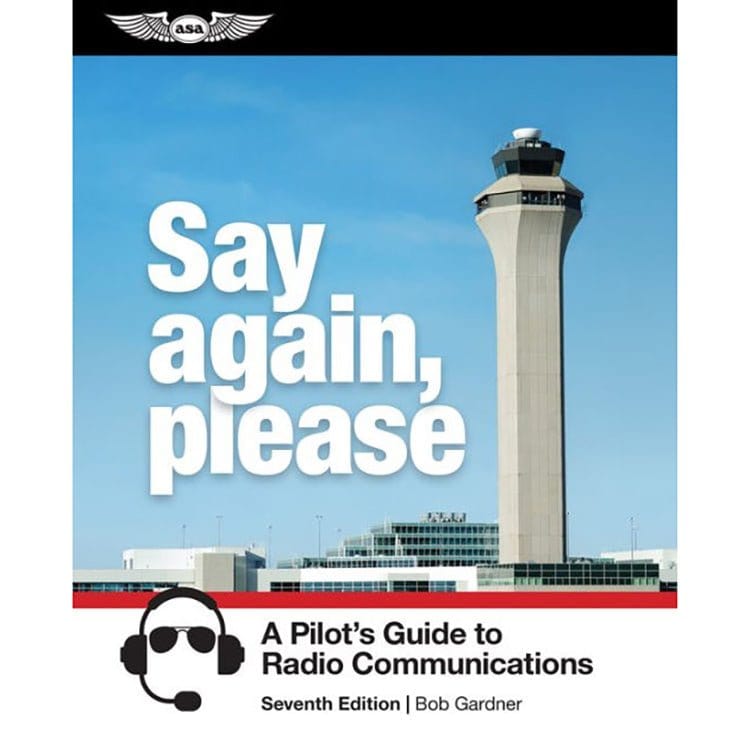
What are the three main things you must be able to do as a pilot? ‘Aviate, navigate and communicate,’ as the saying goes.
So, would you trust your life to your communication skills? It may not be something you think about every day.
Still, each time you get into the cockpit and put that headset on, you are doing just that. Safety and communication are directly related. A radio communication failure can quickly become catastrophic.
Just how big a safety impact can be caused by a breakdown in communication? In a 2004 advisory circular, the Federal Aviation Administration estimated that human error was a contributing factor in 60-80% of incidents and accidents.
Ineffective radio communications and other communication-related factors were named as the underlying causes of the human error. Studies and data from other agencies like NASA agree with the FAA statistics.
Clearly there is a serious problem, but to learn how to improve ATC communication, we first must understand what is going wrong.
Let’s dig a little deeper and uncover the source of the communications breakdown. We can come up with a plan to prevent these failures from happening in your cockpit and improve your radio proficiency.

Common ATC Communication Problems
Review incident and accident reports, then talk to other pilots and you will start to see trends. Here are the 6 most common communication problems:
Hearing what you expect to hear
How many times have you taken off from the same runway on the same heading and received the same altitude clearance from control? Would your brain register it if you were cleared for a lower altitude than usual?
We may think we are listening, but NASA’s Aviation Safety Reporting System (ASRS) database tells a different story. Pilots reported near misses when ascending to a higher altitude than they were cleared for. Others reported landing on an incorrect runway after mistakenly “hearing” that they were cleared for their usual runway.
The human brain is designed to look for patterns and to automate processes wherever possible.
If you have a long history of receiving the same altitude clearance, landing on the same runway or taxiing to the same gate, your brain automatically fills in what it expects to hear. You may not register a change in information.
Making assumptions
We have all heard the old warning about what assuming does to “you and me,” but do we heed this warning onboard our aircraft? Many of the communication problems that occur are a result of incorrect assumptions.
If the transmission is somewhat garbled, are you tempted to assume the controller said what you were expecting to hear? Or perhaps you have assumed the tower heard your last transmission even though you didn’t receive a reply. This can be a deadly assumption.

Language barriers
Under difficult conditions, understanding an ATC transmission given by a native English speaker can be hard enough. Now imagine the potential challenges of communicating with someone for whom English is a second language.
Thick accents can render the transmissions barely intelligible. Plus, controllers in other countries may use different phraseology than you are used to.
Tying up the air
You all know the pilot—hopefully it isn’t you—who keys up and launches into a meandering, long-winded transmission to the tower. Meanwhile, his fellow pilots stack up behind him, unable to communicate until he clears.
This is dangerous because it effectively renders that channel useless and creates a communications blackout for other aircraft. They have no means of receiving direction from control until the verbose pilot clears the air.
Leaving out information when transmitting
While you don’t want to commit the sin of tying up the air unnecessarily, it is also a problem if you fail to provide the appropriate information. When this happens, the controller can be uncertain of which aircraft they are communicating with and what that aircraft’s location is.
The controller has enough to juggle—having to take time to ask a pilot for additional information which should have been included in the original transmission could put everyone at risk.
Radio use errors
Nothing makes you stand out in all the wrong ways like making a newbie radio use error. The most common are transmitting on the wrong channel, walking on someone else’s transmission and having your volume turned down so low that you don’t hear control.

Aviation Radio Communication Solutions
Now we know what can go wrong with aviation communication. Great—so how do we fix it? Let’s go back to each of the communications problems we discovered and implement a solution.
Actively listen and Readback
The next time you fly a frequent flight plan, as you take off, ask yourself if you are actively listening. Do you hear ATC is saying, or is your brain already telling yourself you have been cleared to your expected altitude?
Practice active listening skills. Force yourself to listen to what is being said and then do a readback so that if you are incorrect, the controller will catch the error and correct you.
Clarify
If you didn’t understand control’s last transmission, don’t try to guess what they said. Respond by asking for clarification. If your transmission wasn’t acknowledged, you must treat it as though it was not received. Do not assume that you were heard.
Rephrase and confirm
To get around the communication challenges caused by language barriers, rephrase your message. Use simpler, easier to understand words. Speak slowly and clearly.
If you receive instructions that don’t seem to be correct based on your understanding of them, use simple English and ask for confirmation.
An example from an ASRS report talks of a captain who during taxi believed the controller had said, “Cleared into position and wait.” The captain and first officer thought they were cleared to enter the runway. The first officer confirmed with control, “Did you clear us into position and hold?” to which control replied, “Yes.”
However, as they proceeded past the hold line, the controller yelled at them to stop. An airliner broke through the clouds and landed directly in front of them. Looking back on the incident, the captain now believes the controller told him, “Cleared to the hold line and wait.”
If he were in the situation again, he says he would have simply asked the controller, “Do you want us to go on the runway?” There would have been no room for confusion, and the controller would have clearly told him, “No!”
This example highlights the need to not only ask for confirmation of instructions, but to also rephrase them to their clearest possible form. This decrease the chance for misunderstandings.
Remove jargon in these types of situations. Jargon is only helpful if both parties have the same understanding of its meaning. If not, it just confuses the situation more.
Transmit with brevity and clarity
Air time is precious and must be shared. Remember that it is “press to talk,” not “press to think.” Know what you are going to say before you key up. When you do transmit, be clear and make your communication only as long as necessary.
Include all relevant information
Give the air traffic controller exactly the information that is needed for that transmission. Every transmission must include your “who, where, and what.”
Who are you? Where are you? What do you want from control?
Remember to use your full aircraft identification in your initial callup and continue to use it unless control has addressed you by a shortened identifier. At that point you can use the shortened identifier. Use standard phraseology for communication.
Pause and confirm before transmitting
Avoid newbie radio blunders by pausing for a moment before transmitting. Listen to traffic and confirm you are on the correct station. Set your volume at a level that you can hear. Wait to transmit until you aren’t walking on anyone else.
Study and Practice
Like any other piloting skill, ATC communication is a skill which must be learned.
Here are some steps you can take:
- Review radio communications phraseology and techniques.
- Watch an ATC communication tutorial so you can hear what the pros sound like and practice the correct way to formulate your traffic.
- Read the Pilot Controller Glossary PDF provided by the FAA in order to learn or brush up on terms and aviation phraseology that aircraft pilots need to know.
- If you are a student pilot and attend a flight school, ask your flight instructor to practice radio communications with you and help you adjust to aviation lingo.
- Learn about The 11 Light Gun Signals All Pilots Must Know (And How to Respond)
Remember
A breakdown in communication with ATC can be deadly. By recognizing the most common communication problems and taking steps to avoid them, you can become a safer more professional pilot who Air Traffic Controllers look forward to interacting with.
Improve your flight training experience by practicing your ATC communications skills through listening to ATCLive, and adjusting your ears to hearing how an airline pilot communicates with an Air Traffic Controller.

|
Say Again, Please: Guide to Radio CommunicationsThe "Say Again, Please: Guide to Radio Communications" exists to help you learn the radio rules of engagement. 
|
Want to learn more about aviation communications and equipment?
Our guides are designed to help student pilots become professional pilots and for private pilots to brush up on their knowledge and skills.
-
Lost Comms on IFR Flight (What to do & Procedures to Follow)
- Aviation Risk Management (Learn from The Pros)
Did you find this article helpful?
Do you think we missed anything important? Let us know in the comments below!







